The 2010 Shanghai Expo, Cultural Diplomacy, and a Tale of Three States: China, North Korea and the US
Expos Still Matter in the 21st Century
A couple of years ago, this correspondent contributed an article on international expositions to the Palgrave Dictionary of Transnational History which noted the recent global proliferation of Disneylands and eye-popping casino resorts that were usurping the historical role of world’s fairs and concluded that while “cities around the world still vie to serve as hosts, and urban planners and politicians still see potential benefits….it is doubtful that the exposition will ever be able to recapture a large portion of its earlier transnational cultural and political significance.”
I still stand by that assessment based on historical metrics: the exposition today does not offer the sort of global cultural game-changer on the lines of, for example, the 1851 London Great Exhibition, the 1893 Chicago Columbian Exposition, or the 1889 and 1900 Paris Expositions Universelles (the former, the first modern fair, grandly announced the second industrial revolution; the Chicago expo pole-axed the world with America’s economic, technological and popular cultural might; and the Paris fairs provided, among other things, the inspiration through their imperial cultural displays for visiting figures like Gauguin, Matisse and Picasso to revolutionize Western art).
Nonetheless, the exposition remains a significant factor in cultural international relations, and more instrumentally in the realm of public/cultural diplomacy. Concerning the latter, the expo is a venue for the established powers to portray and explain themselves, for rising powers to announce themselves and help shape the narrative of their rise, and for smaller states to chart their accomplishments, challenges and aspirations. This is true both for the host country and for the sponsors of national pavilions.
Thoughtfully—and for wealthier countries, grandly but unostentatiously—mounted expositions and pavilions can be a boon to cultural diplomatic efforts, offering the opportunity to reach out to governments, large numbers of on-site visitors, and exponentially more virtual visitors via print media, television and especially the Internet.
The converse is true as well—a poorly mounted fair or an uninspired, uninspiring pavilion can be an insult to other governments, a disappointment to visitors, and a virally spread embarrassment via the global media.
Welcome to Shanghai, Whether You’re Naughty or Nice
And thus we come to the 2010 Shanghai Expo. China has mounted a big, attractive international exposition, a worthy successor to the 2008 Beijing Olympics. The Expo’s organizers—that is, the Chinese government—have done something especially right, if only for self-interested reasons: the fair offers a venue to all comers, including some very unpleasant actors. North Korea, Myanmar and Iran (whose pavilion proudly displays a stuffed goat, ostensibly the first to be cloned in the Islamic Republic) are all present and accounted for. Cuba is there—no surprise, of course, given the two states’ exceedingly nominal kindred communist ideological bent—as are Venezuela, Belarus and Zimbabwe, the last embedded along with many other African states both naughty and nice in a pan-continental pavilion paid for by Beijing. The Good, The Bad, and The Ugly as it were, 193 nations in all, stand cheek-by-jowl, spread across the vast grounds of what is ostensibly the largest world’s fair to date.
Most of the unpleasant states present at Shanghai hold some manner of strategic interest for China (e.g. African clients: raw materials; North Korea: prevent collapse and flood of starving refugees across border; Venezuela: goose the United States in its own back yard). Nonetheless, Beijing has done a fine if perhaps inadvertent service by giving some of the malefactors ample rope with which to publicly hang themselves and twist slowly in the breeze.
North Korea’s Pavilion: Nuts On Display
In its first exposition appearance ever, the Democratic People’s Republic of Korea is the clear winner of the “Pay No Attention to the Man Behind the Curtain” (also known as the “Are You Going to Believe Me or Your Own Lying Eyes?”) sweepstakes. Visitors to the DPRK pavilion are assured that North Korea is “the Paradise for people.”
Flags at 2010 Shanghai Expo.
Photo courtesy of Cesar Corona © 2010
As the Shanghai Expo’s theme is “Better City, Better Life,” the North Korean exhibits duly purport to “present a prosperous and modern Pyongyang based on the traditions of DPRK, where education, science, culture and sports have achieved great development during its long history.”
The word “prosperous” has, it should be obvious, been stretched rather beyond the breaking point, given the 1990s famine that killed a million people (and which currently threatens to recur), the recent drastic devaluation of the local currency that beggared most of the populace, and the ground and satellite photographic evidence that Pyongyang, the national showplace, slips into pre-industrial darkness come nightfall along with the rest of the country because of an utter lack of available electricity.
Theme Pavilions and Volunteers Sculpture at 2010 Shanghai Expo.
Photo courtesy of Cesar Corona © 2010
China’s Tibet and Xinjiang Pavilions: Almost Pyongyang-Worthy
In a salutary twist, the People’s Republic of China has even managed to inflict some of the same kind of damage on itself with some of its own exhibitions, which qualify as at least semi-finalists in the aforementioned “Pay No Attention etc.” sweepstakes. The Tibet pavilion “displays the unique charms of Tibetan culture, Tibetan people’s patriotism, resolution to make progress, and aspiration for well-off life, peace and harmony,” which will come as news to the Tibetans themselves, particularly those who participated in the bloody 2008 Lhasa uprising or were victimized in the subsequent crackdown.
Similarly risible is the theme of the Xinjiang provincial pavilion, “Xinjiang is a nice place,” which is undoubtedly true, but which would perhaps be a more accurate reflection of Beijing’s attitudes and policies if it were extended to further state, “except for all those confounded Uyghers” (a powder keg of anti-Han resentment like Tibet, Xinjiang had its own paroxysm of violence and resultant government crackdown in 2009).
What Happens in Shanghai….Goes Everywhere, Fast
The fact that I am writing these words whilst sitting in my back yard in Santa Fe, New Mexico without yet having ventured to the Expo should provide the reader with a sense of the ease with which information hemorrhages forth from the source and spills around the world, even from countries like China that vigorously filter what comes in and goes out.
While the vast majority of visitors to the Shanghai Expo will be Chinese, many, many times more international observers will access information and commentary about the fair via the Web. Do something right and the world will take notice, quickly and en masse.
The same of course holds true if one does something wrong. Spectacular physical infrastructure? Stunningly handsome Chinese pavilion? Millions across the earth applaud. Mendacious Chinese regional exhibits concerning beleaguered, restive minorities? Certifiably crazy claims by North Korea about the state of the DPRK economy and society? Millions across the earth cringe, guffaw, or merely shake their heads in amazement.
The American Pavilion: Brought to You by Pepsi, 3M, Amway, and a Slew of Other Corporations
Which brings us to the American pavilion at Shanghai, and more broadly to US policy concerning participation in international expositions. The verdicts on the United States exhibition range from tepid approval—Secretary of State Clinton told journalists, “It’s fine,” after her visit to the pavilion, not exactly the proverbial ringing endorsement—to thunderous excoriations. Popular Science, not a magazine given to angry pronouncements, fairly snarled that “The USA Pavilion is a Disgrace”: contrasting the many fair pavilions that “are phenomenal, both inside and out” with the US offering, PopSci’s writer laments not only that the pavilion, marked by the anodyne theme “Rising to the Challenge,” is “visually unimpressive” (a common refrain among critics; how far has US fair architecture fallen from the heady days of Edward Durell Stone and Buckminster Fuller), but that its festooning with the logos and other associations, including out-and-out advertisements, of its many corporate sponsors “is an embarrassment….The only content inside the USA Pavilion is more advertising, only for corporations, not culture. Is that really the message we want to be sending?”
Observers are left to wonder how the wealthiest, most powerful, most culturally influential nation on earth could have made such a hash of the opportunity-cum responsibility. The puckish but incisive Shanghai-based US journalist Adam Minter has been chronicling the myriad problems surrounding the US Shanghai Expo pavilion project. The bottom line is a lack of governmental vision, commitment and funding that has its roots in the debacle of the 1992 Seville Exposition, in which the US spent millions of federal dollars in a haphazard fashion to fund a poorly received pavilion, and which resulted in backlash legislation that made appropriating money from Congress for future expositions difficult if not impossible.
Since then funding has come exclusively from private—that is, commercial—sources, and the US pavilion in Shanghai is the reductio ad absurdum of this process. Writing at the Huffington Post, Bob Jacobson has catchily labeled the phenomenon the “Blackwatering” of US public diplomacy, a reference to the infamously trigger-happy private security company that operated in Iraq on a US government outsourcing contract, performing duties normally associated with the military but without the governmental oversight to which troops or other official armed personnel are subject.
By the time the George W. Bush administration put out its call in 2006 for non-governmental applicants to supervise the US pavilion enterprise, the project description entailed a total off-loading of responsibility on the government’s part: “Proposals should clearly demonstrate how the planned exhibit [to be devised by the applying party] will educate and inform foreign audiences about the United States and its people and promote broad US commercial interests around the world, as well as how specifically it will address the theme and General Regulations of the Expo.” But while Jacobson’s metaphor may be a bit over the top—for example Amway, a prominent pavilion sponsor, is a pretty eccentric enterprise, but they’re not killing anyone, and the company is actually quite popular in China—his core idea, building on Adam Minter’s reportage, is basically sound. America’s participation in international expositions is far too important in terms of both positive and negative return to leave the planning and execution to the private sector. The US government was heavily and openly involved in two years of planning for the American pavilion at the 1958 Brussels Exposition; in contrast, it was only in early 2009, a bit more than a year prior to the start of the Shanghai Expo, that a non-profit organization went public with plans for a US pavilion and an initial request for private-sector funding. To be sure, the Obama administration worked heroically on short notice to reengage with the Shanghai Expo after several years of neglect by its predecessor; but the resulting pavilion could not help but be a jerrybuilt farrago.
The China pavilion at the 2010 Shanghai Expo.
Photo courtesy of Peter Winter © 2010
If Shanghai 2010 is a Loss, There’s Always Milan 2015 (and Beyond): US Policy Prescriptions
The damage has been done for 2010. The question for the US is, what about the future? Italy competed fiercely with Turkey in particular for the 2015 Expo, which will be held in Milan. The competition is already on for the 2020 exposition, even though no formal bids are allowed prior to 2011. Host lobbying movements are afoot throughout the world; among them are several major American cities, including New York, San Francisco and Houston. Thus there are opportunities for a true, substantive US re-engagement with international expositions, both as guest and host.
In the immediate term, the Obama administration can take several concrete steps. First, it can make the strategic decision that the US can and must be an active participant in expositions. Second, having done so, it can re-center the planning process at the State Department, specifically within the office of the Undersecretary for Public Affairs and Public Diplomacy, although there should be a public-private advisory board that draws on strengths that have not been seriously tapped recently in the education and cultural—both high and popular—sectors. The Department of Commerce and broader US private sector interests can have a substantial consultative role, but clear authority should rest with State, and the emphasis should be on cultural interaction, not commercial advantage.
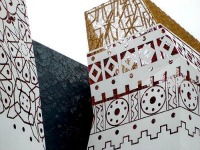
Detail of the Russian Pavilion at the 2010 Shanghai Expo. Photo courtesy of Cesar Corona. © 2010
Third, the US should rejoin the Bureau International des Expositions [BIE], from which it was suspended in 2001 over non-payment of the tiny yearly dues. This leads to the fourth necessary administration action, which is to get Congress to once again provide ready funding for US exposition activities. The BIE dues are controlled by Congress, but that is symbolic; more to the point, and pocketbook, is overturning the 1990s legislation that turned off the funding spigot. This will require fast action, as the Democrats are likely to suffer losses in the upcoming midterm elections, and the Republicans, whether they are a strengthened Congressional minority or a majority, are unlikely to be sympathetic to restoring funding.
In the globalized early 21st century, the eyes of the world can shift to, and stay focused on, any event or phenomenon that captures their attention. The Internet in particular can serve as a force multiplier to either enhance or erode the attractive/persuasive soft power of a high-profile institution like the international exposition.
The choice for hosts and guests alike is whether or not to put themselves forward attractively, honestly, and, to the extent that finances allow, generously. In 2010 China has admirably managed the first and third but fallen rather short on the second; and the less said about North Korea the better. The US has completely bollixed the first and third; and while there’s nothing dishonest about the pavilion’s tacit emphasis on commerce, it does a grave disservice to the richness of American culture and society and sends an unappetizingly narrow message about US values.
The private sector has proven that it lacks the vision and will to take the lead in devising America’s participation in international expositions. The US government thus has no real choice but to move back to the forefront when it comes to designing, funding and executing the American exposition presence. The world’s peoples will continue to watch what the US does or doesn’t do concerning world’s fairs, as they do virtually everything concerning America, scrutinizing through cheap, reliable, 24/7 electronic spectacles. Washington needs to make sure America gives them something worth seeing and applauding.
Malaysia, Singapore, and Australia Pavilions at the 2010 Shanghai Expo.
Photo courtesy of Cesar Corona © 2010
Tags
Issue Contents
- The View From CPD May/June 2010
- The 2010 Shanghai Expo, Cultural Diplomacy, and a Tale of Three States: China, North Korea and the US
- The Diplomatic Component of Expos
- CPD’s Shanghai Expo Blogs and Video Conversations
- The USA Pavilion’s Human Element
- PD and the Gaza Flotilla
- Review: The United States and Public Diplomacy: New Directions in Cultural and International History
Most Read CPD Blogs
-
March 22
-
February 23
-
February 22
-
March 4
-
March 19
Visit CPD's Online Library
Explore CPD's vast online database featuring the latest books, articles, speeches and information on international organizations dedicated to public diplomacy.








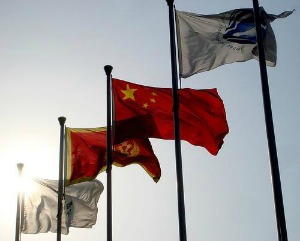
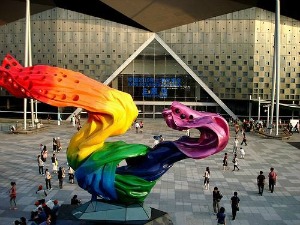
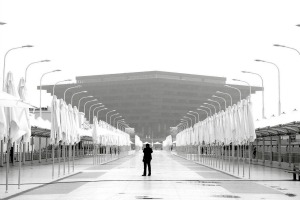
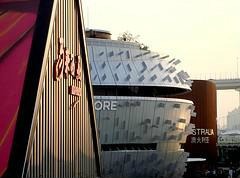
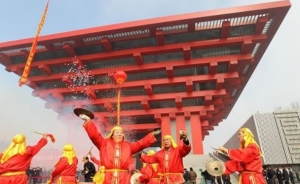
Add comment